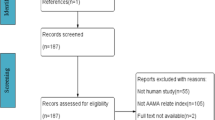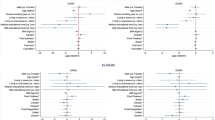Abstract
Acrylamide (AA) has been identified as probably carcinogenic to humans and thus represents a potential public health threat. This study aimed to determine the urinary concentrations of AA and N-acetyl-S-(2-carbamoylethyl)-l-cysteine (AAMA) in a nationally representative sample (n = 1025) of children and adolescents (age range 3–18 years) in South Korea. The AA and AAMA detection rates and geometric mean concentrations were 97%, 19.1 ng/mL, and 98.7%, 26.4 ng/mL, respectively. Although urinary AA levels did not vary widely by age (17.2 ng/mL at 3–6 years, 19.9 ng/mL at 7–18 years), the urinary concentration of AAMA increased with age (18.3 ng/mL at 3–6 years, 30.4 ng/mL at 7–18 years). A multiple linear regression analysis revealed that the urinary levels of AA and AAMA varied significantly by sex, with the adjusted proportional changes indicating rates of 1.47- to 1.48-fold higher at 3–6 years and 1.36- to 1.68-fold higher at 7–18 years among males relative to females. Furthermore, the urinary levels of AA and AAMA correlated with the consumption of certain foods (doughnuts, hotdogs, popcorn, and nachos) among male subjects aged 7–18 years. The urinary concentrations of AA and AAMA increased significantly with the smoking status and passive smoking exposure, with adjusted proportional changes of 1.51 to 1.71-fold higher among smokers relative to non-smokers in the age range of 7–18 years. Exposure to smoking for > 30 min led to adjusted proportional increases in AA and AAMA of 1.51 and 1.77 times in the non-smoking group aged 3–6 years and a 1.52-fold increase in AAMA in the non-smoking group aged 7–18 years. In conclusion, the urinary levels of AA and AAMA were found to associate with age, sex, smoking, and food consumption in a population of Korean children and adolescents.
Similar content being viewed by others
References
Alves RC, Soares C, Casal S, Fernandes JO, Oliveira MBP (2010) Acrylamide in espresso coffee: influence of species, roast degree and brew length. Food Chem 119(3):929–934
Bassett J (2000) The Asia-Pacific perspective: redefining obesity and its treatment health communications Australia. WHO, Geneva
Bilau M, Matthys C, Vinkx C, Henauw SD (2003) Probabilistic exposure assessment for acrylamide in Flemish adolescents. Toxicol Lett 21:60
Bjellaas T, Stølen LH, Haugen M, Paulsen JE, Alexander J, Lundanes E, Becher G (2007) Urinary acrylamide metabolites as biomarkers for short-term dietary exposure to acrylamide. Food Chem Toxicol 45(6):1020–1026
Boettcher MI, Schettgen T, Kütting B, Pischetsrieder M, Angerer J (2005) Mercapturic acids of acrylamide and glycidamide as biomarkers of the internal exposure to acrylamide in the general population. Mutat Res-Gen Tox En 580:167–176
Boon PE, Mul D, Voet A, Donkersgoed H, Brette GM, Klaveren JD (2005) Calculations of dietary exposure to acrylamide. Mutat Res-Gen Tox En 580:143–155
Brantsaeter AL, Haugen M, de Mul A, Bjellaas T, Becher G, Van Klaveren J (2008) Exploration of difference methods to assess dietary acrylamide exposure in pregnant women participating in the Norwegian Mother and Child Cohort Study (MoBa). Food Chem Toxicol 46:2808–2814
Burek JD, Albee RR, Beyer JE, Bell TJ, Carreon RM, Morden DC, Wade CE, Hermann EA, Gorzinski SJ (1980) Subchronic toxicity of acrylamide administered to rats in the drinking water followed by up to 144 days of recovery. J Environ Pathol Toxicol 4:157–182
Calafat AM, Ye X, Wong LY, Bishop AM (2010) Needham AL urinary concentrations of four parabens in the U.S. population: NHANES 2005–2006. Environ Health Persp 118:679–685
Catalgol B, Ozhan G, Alpertunga B (2009) Acrylamide-induced oxidative stress in human erythrocytes. Hum Exp Toxicol 28:611–617
DeWoskin RS, Sweeney LM, Teeguarden JG, Sams R, Vandenberg J (2013) Comparison of PBTK model and biomarker based estimates of the internal dosimetry of acrylamide. Food Chem Toxicol 58:506–521
Dybing E, Farmer PB, Andersen M, Fennell TR, Lalljie SP, Muller DJ, Olin S, Petersen BJ, Schlatter J, Scholz G, Scimeca JA, Slimani N, Tornqvist M, Tuijtelaars S, Verger P (2005) Human exposure and internal dose assessments of acrylamide in food. Food Chem Toxicol 43:365–410
Dybing E, Sanner T (2003) Risk assessment of acrylamide in foods. Toxicol Sci 75(1):7–15
FAO/WHO (2002) Health implications of acrylamide in food–report of a Joint FAO/WHO consultation, Geneva
Friedman MA, Dulak LH, Stedham MA (1995) A lifetime oncogenicity study in rats with acrylamide. J Soc Toxicol 27:95–105
Fuhr U, Boettcher MI, Kinzig-Schippers M, Weyer A, Jetter A, Lazar A, Harlfinger S, Klaassen T, Berkessel A, Angerer J, Sörgel F, Schömig E (2006) Toxicokinetics of acrylamide in humans after ingestion of a defined dose in a test meal to improve risk assessment for acrylamide carcinogenicity. Cancer Epidem Biomar 15(2):266–271
Granby K, Fagt S (2004) Analysis of acrylamide in coffee and dietary exposure to acrylamide from coffee. Anal Chim Acta 520:177–182
Hartmann EC, Boettcher MI, Schettgen T, Fromme H, Drexler H, Angerer J (2008) Hemoglobin adducts and mercapturic acid excretion of acrylamide and glycidamide in one study population. J Agric Food Chem 56:6061–6068
Heudorf U, Hartmann E, Angerer J (2009) Acrylamide in children – exposure assessment via urinary acrylamide metabolites as biomarkers. Int J Hyg Environ Health 212:135–141
Hilbig A, Freidank N, Kersting M, Wilhelm M, Wittsiepe J (2004) Estimation of the dietary intake of acrylamide by German infants, children and adolescents as calculated from dietary records and available data in acrylamide levels in food group. Int J Hyg Environ Health 207:463–471
Hogervorst JG, Baars BJ, Schouten LJ, Konings EJ, Goldbohm RA, van den Brandt PA (2010) The carcinogenicity of dietary acrylamide intake. Toxicol 40:485–512
International Agency for Research on Cancer (1994) Opinion of the scientific committee on food on new findings regarding the presence of acrylamide in food. Available at: http://europa.eu.int/comm/food/fs/sc/scf/out131_en.pdf
Ji KG, Kang SG, Lee GW, Lee SL, Jo AR, Kwak KH, Kim DH, Kho DH, Lee SW, Kim SM, Kim SK, Hiuang YF, Wu KY, Choi KH (2013) Urinary levels of N-acetyl-S-(2-carbamoylethyl)-cysteine (AAMA), an acrylamide metabolite, in Korean children and their association with food consumption. Sci Total Environ 456:17–23
Kang HS, Ko A, Kwon KE, Kyung MS, Moon GI, Park JH, Lee HS, Suh JH, Lee JM, Hwang MS, Kim KS, Hong JH, Hwang IG (2016) Urinary benzophenone concentrations and their association with demographic factors in a South Korean population. Environ Res 149:1–7
Konings EJ, Baars KJD, Spanjer MC, Rensen PM, Hiemstra M, Kooij JA, Peters PW (2003) Acrylamide exposure from foods of the Dutch population and an assessment of the consequent risks. Food Chem Toxicol 41:1569–1579
Kroes R, Müller D, Lambe J, Löwik MRH, Klaveren J, Kleiner J, Massey R, Mayer S, Urieta I, Verger P, Visconti A (2002) Assessment of intake from the diet. Food Chem Toxicol 40:327–385
Lee JH, Lee KJ, Ahn R, Kang HS (2014) Urinary concentrations of acrylamide (AA) and N-acetyl-S-(2-carbamoylethyl)-cysteine (AAMA) and associations with demographic factors in the south Korean population. Int J Hyg Environ Health 217:751–757
Lee JH, Lee KJ, Kang HS (2016) Estimation of the daily human intake of acrylamide (AA) based on urinary N-acetyl-S-(2-carbamoylethyl)-cysteine (AAMA) and the contribution of dietary habits in South Korean adults. J Environ Health Sci 42(4):235–245
Lee S, Yoo M, Koo M, Kim HJ, Kim M, Park SK, Shin D (2013) In-house–validated liquid chromatography–tandem mass spectrometry (LC-MS/MS) method for survey of acrylamide in various processed foods from Korean market. Food Sci Nutr 1(5):402–407
Lin CY, Lee HL, Chen YC, Lien GW, Lin LY, Wen LL, Liao CC, Chien KL, Sung FC, Chen PC, Su TC (2013) Positive association between urinary levels of 8-hydroxydeoxyguanosine and the acrylamide metabolite N-acetyl-S-(propionamide)-cysteine in adolescents and young adults. J Hazard Mater 261:372–377
Matthys C, Bilau M, Govaert Y, Moons E, Henauw DS, Willems JL (2005) Risk assessment of dietary acrylamide intake in Flemish adolescents. Food Chem Toxicol 43:271–278
Mottram DS, Wedzicha BL, Dodson AT (2002) Acrylamide is formed in the Maillard reaction. Nature 419:448–449
Naruszewicz M, Downar DZ, Kosmider A, Nowicka G, Wojciechowska MK, Vikstrom AS, Tornqvist M (2009) Chronic intake of potato chips in humans increases the production of reactive oxygen radicals by leukocytes and increases plasma C-reactive protein: a pilot study. Am J Clin Nutr 89:773–777
Park JY, Kim CT, Kim HY; Keum EH, Lee MS, Chung SY, Sho YS, Lee JO, Oh SS (2004) Acrylamide monitoring of domestic food products. Korean J Food Sci Technol36(6): 872–878
Parzefall W (2008) Minireview on the toxicity of dietary acrylamide. Food Chem Toxicol 46:1360–1364
Pedreschi F, Kaack K, Granby K (2004) Reduction of acrylamide formation in potato slices during frying. Food Chem Toxicol 37(6):679–685
Riboldi BP, Vinhas ÁM, Moreira JD (2014) Risks of dietary acrylamide exposure: a systematic review. Food Chem 157:310–322
Smith CJ, Perfetti TA, Rumple MA, Rodgman A, Doolittle DJ (2000) IARC group 2A carcinogens reported in cigarette mainstream smoke. Food Chem Toxicol 38:371–383
Smith, KW, Braun JM, Williams PL, Ehrlich S, Correia KF, Calafat AM, Ye X, Ford J, Keller M, Meeker JD, Hauser R (2012) Predictors and variability of urinary paraben concentrations in men and women, including before and during pregnancy. Environ Health Perspect 120(11):1538–1543
Svensson K, Abramsson L, Becker W, Glynn A, Hellenas KE, Lind Y, Rosen J (2003) Dietary intake of acrylamide in Sweden. Food Chem Toxicol 41:1581–1586
Swedish National Food Administration (2002) Acrylamide is formed during the preparation of food and occurs in many foodstuffs. Available at: http://www.slv.se
Sweeney LM, Kirman RC, Gargas ML, Carson ML, Tardiff RG (2010) Development of a physiologically-based toxicokinetic model of acrylamide and glycidamide in rats and humans. Food Chem Toxicol 48:668–685
Urban M, Kavvadias D, Riedel K, Scherer G, Tricker AR (2006) Urinary mercapturic acids and a hemoglobin adduct for the dosimetry of acrylamide exposure in smokers and nonsmokers. Inhal Toxicol 18:831–839
Valko M, Leibfritz D, Moncol J, Cronin MT, Mazur M, Telser J (2007) Free radicals and antioxidants in normal physiological functions and human disease. Int J Biochem Cell B 39:44–84
Ye X, Wong LY, Bishop AM, Calafat AM (2011) Variability of urinary concentrations of bisphenol A in spot samples, first morning voids, and 24-hour collections. Environ Health Persp 119:983–988
Yousef MI, Demerdash FME (2006) Acrylamide-induced oxidative stress and biochemical perturbations in rats. Toxicol 219:133–141
Funding
This study was supported by a grant (no. 11161MFDS723) from the Ministry of Food and Drug Safety in 2011.
Author information
Authors and Affiliations
Corresponding authors
Ethics declarations
This study was approved by the Asan Medical Center (Seoul, Korea) Human Research Ethics Committee. All participants provided written informed consent in accordance with the Helsinki Declaration prior to data collection.
Additional information
Responsible editor: Philippe Garrigues
Publisher’s note
Springer Nature remains neutral with regard to jurisdictional claims in published maps and institutional affiliations.
Rights and permissions
About this article
Cite this article
Choi, S.Y., Ko, A., Kang, HS. et al. Association of urinary acrylamide concentration with lifestyle and demographic factors in a population of South Korean children and adolescents. Environ Sci Pollut Res 26, 18247–18255 (2019). https://doi.org/10.1007/s11356-019-05037-w
Received:
Accepted:
Published:
Issue Date:
DOI: https://doi.org/10.1007/s11356-019-05037-w




